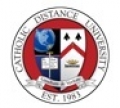Conclusion: The Hypostasis Problem
The term hypostasis itself had its difficulties. As mentioned above, the term risked the confusion of lending itself toward a belief in three gods rather than one—as a hypostasis usually refers to a distinct being. A greater problem was that the term itself was often used interchangeably with ousia. This is why The Council of Nicaea had originally anathematized those who held the Son to be a distinct hypostasis precisely because this opened the door to holding the Son to be of a different and lesser nature. The Cappadocians however had solved that problem by insisting on a distinction between hypostasis and ousia.
Presumably, the question of Christ’s divinity had been settled. Speculators now began to direct their attention to the opposite side of the question, whether Jesus Christ was truly man. It is to this controversy that we shall turn our attention next week.
But the biggest problem of all that remained was caused by the term hypostasis vis a vis the person of Jesus Christ. If Jesus Christ was a distinct hypostasis of the divine ousia, this means that he was a distinct instance of the divine nature. But how could his humanity fit in with this since, generally speaking, a hypostasis has precisely one nature? A tree is a tree and not something else because it is a hypostasis of tree nature. If Jesus was God how could he also be man? Did Jesus have a human nature or was his humanity only an apparent humanity?
Presumably, the question of Christ’s divinity had been settled. Speculators now began to direct their attention to the opposite side of the question, whether Jesus Christ was truly man. It is to this controversy that we shall turn our attention next week.
| Previous page on path | Introduction, page 11 of 12 | Next page on path |

Discussion of "Conclusion: The Hypostasis Problem"
Add your voice to this discussion.
Checking your signed in status ...